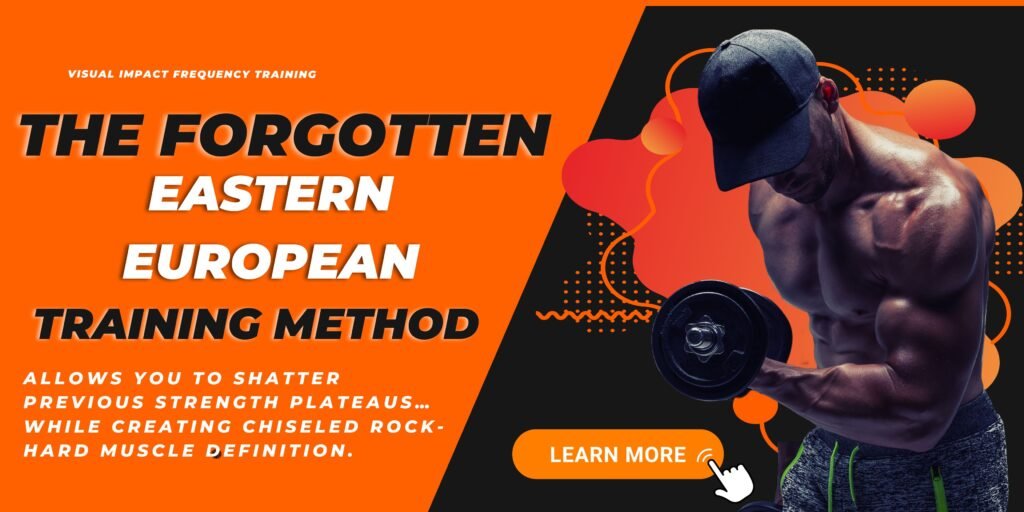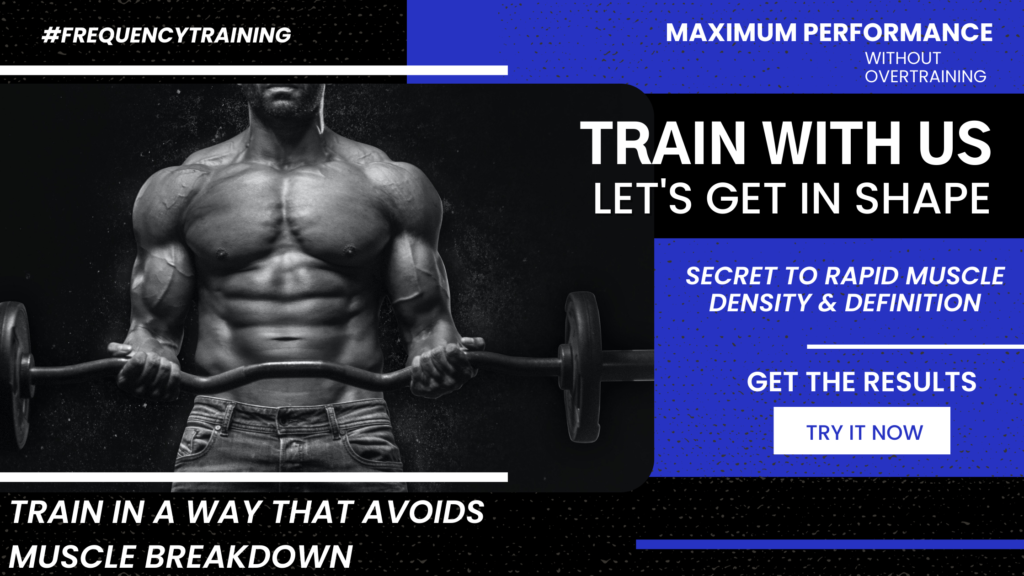In the world of strength training, where the pursuit of gains is as diverse as it is relentless, the Maximal Effort Method stands out as a titan among methods. It’s not just another routine; it’s a battle-tested strategy that has forged champions, sculpted physiques of steel, and turned the ordinary into the extraordinary. Today, we dive deep into this powerhouse technique, stripping away the jargon to reveal how it can be your secret weapon in the quest for unparalleled strength.

Learn about the maximal effort method for strength gains
- Definition: Technique for maximizing strength gains through heavy, low-repetition sets.
- Implementation: Choose compound exercises, warm up, reach 1-5 rep max, do back-off sets, and change exercises.
- Applications: Can be used in powerlifting, bodybuilding, weightlifting, and strongman training.
What Is the Maximal Effort Method?
The Maximal Effort Method is not for the faint-hearted. Its a philosophy, a testament to the power of pushing your limits. At its core, it involves lifting the heaviest weight you can move for 1-5 repetitions. This method is grounded in the principle that to increase strength, you must expose your muscles to stress levels they’ve never encountered before. It’s that simple, and yet, it’s that complex.
From my own journey, I remember the first time I decided to embrace the Maximal Effort Method. The weights that once seemed insurmountable became my benchmarks, and then, my milestones. It was a transformative experience, not just physically, but mentally.

How to Use the Maximal Effort Method
Choose a Compound Exercise
The foundation of the Maximal Effort Method lies in the selection of compound exercises. These are movements that engage multiple muscle groups simultaneously – think squats, deadlifts, and bench presses. The beauty of these exercises is their ability to simulate real-world strength scenarios, making the strength you gain not just impressive, but functional.
Choosing the right compound exercise is akin to selecting your battlefield. It sets the stage for the victories (and struggles) to come.
Warm Up
Never underestimate the power of a proper warm-up. It prepares your body for the onslaught it’s about to face, reducing the risk of injury and enhancing your performance. A dynamic warm-up that targets the muscles you’re about to train can make the difference between a good day and a great day at the gym.
Work Up to a 1-5 Rep Max
The crescendo of the Maximal Effort Method is working up to your 1-5 Rep Max. This is where you push your limits, lifting the heaviest weight you can manage for a low number of repetitions. It’s a thrilling, challenging, and ultimately rewarding process. Each session is an opportunity to edge closer to your true potential.
Do Back-Off Sets
After the climax of reaching your Rep Max, back-off sets allow you to continue training at a reduced intensity. This technique helps in further stimulating muscle growth and strength without overtaxing your body. It’s a strategic retreat, allowing you to fight another day.
Change the Exercise
Variety is not just the spice of life; it’s a critical component of the Maximal Effort Method. Changing the exercise every 2-3 weeks prevents your body from adapting, ensuring continuous progress. It’s a dance of adaptation, where you’re always leading.
How to Choose the Right Exercise
The art of choosing the right exercise for the MEM is a blend of science and personal intuition. It’s about understanding the demands of each lift and how they align with your goals and capabilities. This choice dictates the trajectory of your strength journey, making it a decision not to be taken lightly.
Focus on Compound Lifts:
- MEM shines with compound lifts that work multiple muscle groups at once. These lifts challenge your entire body and have the most significant strength-building potential.
- Examples include squats, bench press, deadlifts, overhead press, rows, and cleans.
Prioritize Technique:
- Using proper form is crucial in MEM because you’ll be lifting heavy weights. Choose exercises you can perform with excellent technique to avoid injury.
Consider Strength Levels:
- Beginners might not be ready for the full intensity of MEM. It’s best suited for intermediate and advanced lifters with a solid foundation in weight training.
Here’s a breakdown of some suitable exercises:
- Great for Most: Squats, deadlifts, bench press
- Good Options: Overhead press, barbell rows
- Advanced Lifts: Cleans, snatches (require proper coaching)
Remember:
- MEM is demanding. Don’t choose too many exercises per workout.
- Focus on 2-3 compound lifts and prioritize proper form over lifting the heaviest weight possible.
Exercises commonly used in the maximal effort method for strength training
| Exercise | Description |
|---|---|
| Core Lifts | |
| Squat | One of the most fundamental exercises for lower body strength and overall power development. Variations (like the box squat or front squat) within the maximal effort method are commonly used. |
| Bench Press | The standard for upper body pushing strength. You may see variations like the close-grip bench press or incline bench press when using the max effort method. |
| Deadlift | A true test of full-body strength and a fantastic posterior chain developer. Sumo and conventional deadlifts are both used in maximal effort training. |
| Accessory/Supplemental Lifts | |
| Overhead Press | Builds shoulder and tricep strength. Essential for pressing power. |
| Good Mornings | Intensely targets the hamstrings, glutes, and lower back. Fantastic for building the strength needed for a powerful squat and deadlift. |
| Bent-Over Rows | Develops back strength and thickness, important for upper body pulling power. |
How to Use the Maximal Effort Method in Your Program
Incorporating the Maximal Effort Method into your program requires a delicate balance. It’s potent, and like any potent tool, it must be wielded wisely. A general guideline is to dedicate one or two days a week to maximal lifts, ensuring ample recovery time. Remember, recovery is where the magic happens.
The Maximal Effort Method and Powerlifting
For powerlifters, the MEM is not just a training technique; it’s a cornerstone of their craft. It mirrors the demands of competition, where lifting as heavy as possible is the name of the game. The specificity of the method to the sport makes it an indispensable part of a powerlifter’s arsenal.
The Maximal Effort Method and Bodybuilding
While the primary goal of bodybuilding might be aesthetics, the Maximal Effort Method still holds significant value. It builds a foundation of strength that can enhance performance in higher volume training, leading to greater muscle hypertrophy. Its a testament to the versatility of the method, capable of sculpting not just strength, but form.
The Maximal Effort Method and Weightlifting
In weightlifting, where explosive power and precision are paramount, the Maximal Effort Method serves as an excellent tool for building the raw strength required to execute lifts. It complements the technical prowess needed in weightlifting, providing a solid strength base from which to refine skill.

The Maximal Effort Method and Strongman
The unpredictable and varied nature of strongman competitions makes the Maximal Effort Method an ideal training ally. It builds the kind of versatile, functional strength that can be applied to a broad range of challenges, from lifting stones to pulling trucks.
Insider Tip: Incorporate the Dynamic Effort Method on alternate training days to maximize strength gains. The contrast between maximal and dynamic efforts can lead to synergistic improvements in performance.
Real-Life Example: John’s Strength Progress with the Maximal Effort Method
John, a 30-year-old fitness enthusiast, had been struggling to break through a plateau in his strength training routine. After researching different methods, he decided to incorporate the maximal effort method into his workouts.
John’s Experience with the Maximal Effort Method
John started by choosing the bench press as his compound exercise. He followed a structured warm-up routine and gradually worked up to lifting his 5-rep max weight. After completing his heavy sets, he did a few back-off sets to ensure enough volume for muscle growth.
Results and Reflection
After consistently applying the maximal effort method to his training, John saw significant improvements in his bench press strength. Within a few weeks, he was able to lift heavier weights than ever before. This success motivated him to continue using the maximal effort method in his program, rotating exercises to prevent plateaus and keep his progress going.
By sharing his experience, John highlights the effectiveness of the maximal effort method in breaking through strength plateaus and achieving continuous progress in strength training routines.

Conclusion
The Maximal Effort Method is a testament to the raw, unfiltered pursuit of strength. It’s a method that demands respect, for it offers no shortcuts, only a path to realizing one’s true potential. Whether you’re a powerlifter, bodybuilder, weightlifter, or strongman competitor, it provides a framework for pushing the boundaries of what you thought was possible.
My journey with the Maximal Effort Method has been one of the most challenging and rewarding aspects of my training. It has taught me that limits are often just illusions, waiting to be shattered. As you embark on this journey, remember that the weights you lift are not just a measure of your strength, but a testament to your resolve.
So, to those who are ready to embrace the challenge: welcome to the path of maximal effort. It’s a road less traveled, but for those who dare to walk it, the rewards are beyond measure.
FAQs
Q. What is the maximal effort method in fitness?
A. The maximal effort method involves lifting the heaviest weight possible for a few reps.
Q. How can the maximal effort method benefit me?
A. This method helps to improve strength, power, and stimulate muscle growth effectively.
Q. Who should use the maximal effort method in their workouts?
A. Athletes and experienced lifters looking to break through strength plateaus can benefit from this method.
Q. What if I’m a beginner in fitness, should I use this method?
A. Beginners should start with lighter weights and focus on form before incorporating the maximal effort method.
Q. How should I incorporate the maximal effort method into my routine?
A. Include maximal effort days where you focus on heavy, low-rep sets for compound exercises like squats and deadlifts.
Q. What if I’m concerned about the risk of injury with heavy lifting?
A. Start with a weight you can handle safely and progressively increase it to minimize the risk of injury while using the maximal effort method.


